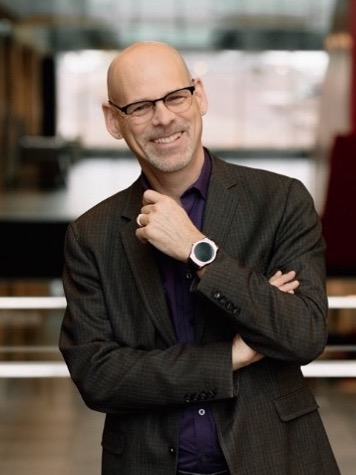
by Marc Hurwitz
3 June 2021
Share this article:
It was the year 2000. The new millennium had just arrived without the predicted collapse of civilization due two-digit dates (not sure who still remembers that!). It’s hard to believe, over 20 years later, that was actually a thing or how concerned people were about it. I had just finished my MBA and was changing careers, leaving many years in Training and Organizational Development to move into Marketing and Product Management roles. As part of the MBA, I’d done the “typical” leadership and OD courses, but something felt missing. It left me with a lot of questions, including: Is it true that only leaders exert influence? In a matrix organization, what happens if all your bosses are transformational at the same time? Is a servant leader serving or leading? Is a position in a hierarchy the same thing as being a leader? To what extent does only focusing on leadership actually create more narcissistic leaders and less effective team behaviors? If we want leaders to be honest and smart, don’t we have the same expectation of them when they aren’t leading? Three years and a lot of middle management experience later, I realized what that missing piece was… followership. It was an idea that quite literally changed my life.
I decided to quit my corporate career as a result of this “aha” and start a consulting firm based on leadership and followership as complementary roles in the social activity we call groups and teams. I’d love to say the path from then to now has been linear; it hasn’t. Rather than being cutting edge, I quickly discovered these ideas were bleeding edge and, frankly, needed a lot of refining to be academically sound and practically useful – a combination my consulting (and life) partner calls pracademic. From doing our first consulting gig in 2005, to submitting a book manuscript in 2010, to ripping it all up and starting over in 2013, we have seen plenty of changes. For example, when we started training, our early clients would not let us use the F-word for fear employees would think they were being insulted by being called a follower. Now, NASA recently announced in a posting for new trainee astronauts that it was looking to recruit people with strong followership skills. What a difference a decade or two makes!
I attended my first ILA conference in 2013 in Montreal. I remember the feeling of not knowing anyone and being somewhat intimidated by the leadership and followership experts whose books and articles I had been avidly devouring. Fortunately, on the first day of the conference, I presented in a session chaired by Rob Koonce – he was the Chair of the Followership Learning Community (now the Followership member community) at the time – with fellow presenter Stephanie Gresh (née Povlosky). They both made me feel at home and introduced me to many of the other people in the followership learning community, many of whom I now consider friends, and many of whom I’ve collaborated with since. While my aha in 2003 ultimately spurred me to go back to university and dedicate my life to leadership, followership, and partnership training, that conference in 2013 gave me a community to share my passions with.
Since then, I have chaired ILA’s Followership member community, run a followership conference, attended every ILA Annual Meeting except for one, and presented multiple times. I have taught leadership (and followership) courses at the graduate and undergraduate level, given keynotes and workshops at conferences around the world, and consulted with the largest of organizations – the U.S. Government – as well as start-ups. My research focus is around rethinking leadership as a partnership activity. Just as you wouldn’t teach only one role in ballroom dancing, why would you teach only one role in the leadership dance? Yes, it would improve the quality of the dancing, but not nearly as much as if you trained both people and, importantly, understood how the roles contributed to the partnership separately as well as together.
Using this analogy, I co-created a model of leadership-followership that respects and articulates both roles. It also democratizes leadership, recognizing that everyone takes on a leadership role some of the time and a followership role at other times. Neither is better or more important and it is this perspective that moves us away from heroic leadership to a place of balanced, collaborative relationships. It is the foundation of my research and the many classroom activities and organizational interventions that my partner and I have developed since.
And now, I have the distinct honour (yes, I’m Canadian as you will discover when you hear me say “about”; and yes, I live near “Schitt’s Creek”) to be one of the facilitators for the virtual Leadership Education Academy this summer. I plan on bringing two things: first, a pracademic approach to organizational consulting whether that involves planning half day offsite training sessions or creating a strategic plan for organizational change. Second, I have a unique take on leadership that is particularly relevant for 21 st century organizational practices. Like the other educators/facilitators at LEA, I have a lot of college experience, too, and look forward to sharing some of the fun things you can do to energize a group of students while engaging their minds and hearts. Finally, while learning from the other facilitators and attendees, I am also hoping to leave with new friends and colleagues.
Do consider joining me for a marvellous adventure in leadership and followership at this year’s Leadership Education Academy. There are less than 15 spots left in this year’s cohort. Register today or you might find yourself on the waitlist!

Marc Hurwitz, PhD MBA MS MS CMC, is Associate Director, Undergraduate and Non-degree Programs, Conrad School of Entrepreneurship and Business, University of Waterloo, Canada. He won the Sandford Fleming Teaching Award in 2019 for his work teaching leadership, consulting, and entrepreneurship. An author of three books and numerous articles on followership and leadership, Marc spent 10 years working for large corporations and has an additional 15 years co-founding and running a leadership-followership consulting firm.

